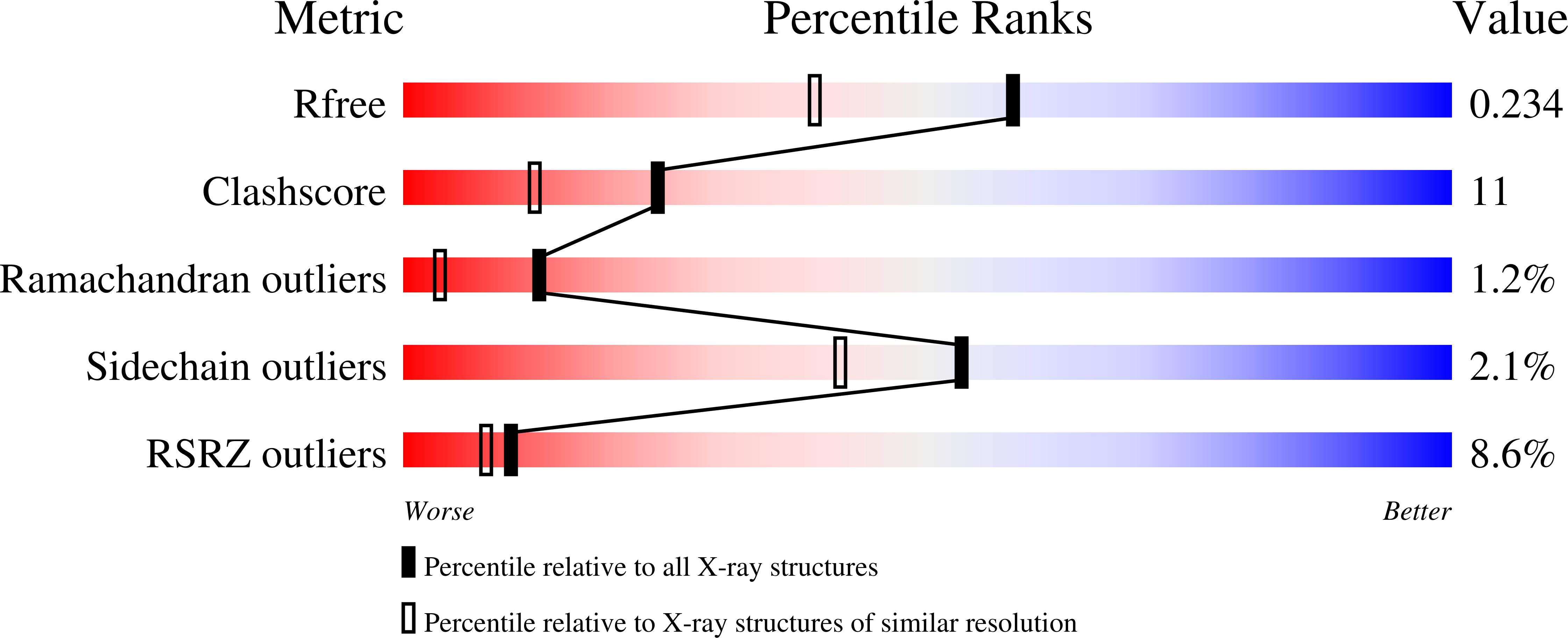Guanidinium derivatives bind preferentially and trigger long-distance conformational changes in an engineered T4 lysozyme.
Yousef, M.S., Bischoff, N., Dyer, C.M., Baase, W.A., Matthews, B.W.(2006) Protein Sci 15: 853-861
- PubMed: 16600969
- DOI: https://doi.org/10.1110/ps.052020606
- Primary Citation of Related Structures:
2F2Q, 2F32, 2F47 - PubMed Abstract:
The binding of guanidinium ion has been shown to promote a large-scale translation of a tandemly duplicated helix in an engineered mutant of T4 lysozyme. The guanidinium ion acts as a surrogate for the guanidino group of an arginine side chain. Here we determine whether methyl- and ethylguanidinium provide better mimics. The results show that addition of the hydrophobic moieties to the ligand enhances the binding affinity concomitant with reduction in ligand solubility. Crystallographic analysis confirms that binding of the alternative ligands to the engineered site still drives the large-scale conformational change. Thermal analysis and NMR data show, in comparison to guanidinium, an increase in protein stability and in ligand affinity. This is presumably due to the successive increase in hydrophobicity in going from guanidinium to ethylguanidinium. A fluorescence-based optical method was developed to sense the ligand-triggered helix translation in solution. The results are a first step in the de novo design of a molecular switch that is not related to the normal function of the protein.
Organizational Affiliation:
Institute of Molecular Biology, Howard Hughes Medical Institute and Department of Physics, University of Oregon, Eugene, 97403-1229, USA.
















